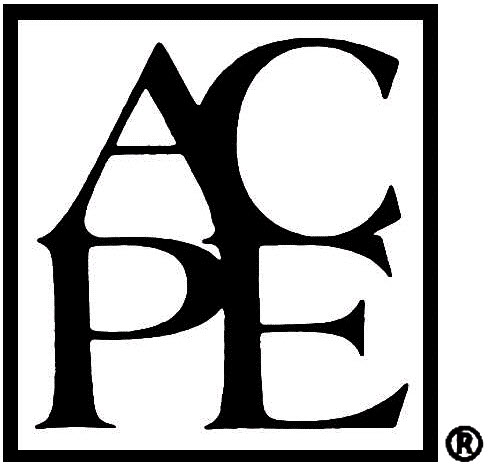Prerecorded Webinar: Practice Makes Perfect: A Guide to Mastering Garbing, Hand Hygiene, and Aseptic Technique
Compounding CE for Pharmacists
Are you a Pharmacy Tech? Check out the Pharmacy Tech version of this course.
Want another way to take this test? Check out the written version of this course.
Course Summary
Every part of the sterile compounding process should be driven by one, critical element: patient safety. The key to achieving this is maintaining excellent aseptic technique, which is defined as a series of methods used to ensure compounded sterile preparations (CSPs) are free from microorganisms, pyrogens, and particulate matter. Preparing CSPs involves numerous factors, each of which has the potential to impact the sterility of these products. These include the environment in which the product is compounded, the equipment utilized to compound the product, and the individual who compounds the CSP. Should a CSP become contaminated and then administered to a patient, major harm and possible death could result. Thus, each factor must be optimized to ensure the safety of the final preparation. This course will provide a review of garbing and hand washing procedures and detail proper aseptic manipulations for pharmacists and pharmacy technicians who compound CSPs. USP Chapter <797> guidelines will be referenced.
Explain proper handwashing procedures
Describe how to don personal protective equipment properly
Describe the use of aseptic technique when compounding sterile preparations
Recall how to evaluate garbing, hand hygiene, and aseptic technique competency
Course Syllabus
I. Introduction
II. Lessons Learned: A Brief History of Sterile Compounding
III. Personal Protective Equipment
1. Getting Ready
2. Types of PPE
3. Donning PPE
4. Removal of PPE
IV. Hand Washing
1. Hand Washing Equipment
2. Hand Washing Procedure
3. Timing
4. Hand Sanitizing
V. Aseptic Technique
1. Gathering Supplies
2. Disinfecting Critical Sites
3. Preparing Needles and Syringes
4. Entering and Withdrawing from a Vial
5. Withdrawing from an Ampule
6. Injecting into Solution
VI. Demonstrating Competency in Garbing and Hand Washing
1. Garbing Competency
2. Evaluation
3. Competency Testing in Aseptic Manipulation
4. Media-Fill Challenge Testing
VII. Documentation
VIII. Summary
- Read the course objectives and faculty planner disclosure
- Read the course material
- Complete the post-test with a minimum score of 70% and complete the course evaluation form.
- Results are automatically submitted to CPE Monitor
Faculty Planner Disclosure
The following individuals were involved in the development of this activity: Liz Fredrickson, PharmD, BCPS, and Susan DePasquale, MSN, PMHNP-BC. There are no financial relationships relevant to this activity to report or disclose by any of the individuals involved in the development of this activity.
Unlabeled Use Disclosures
The information provided in this course is general in nature and it is solely designed to provide participants with continuing education credit(s). This course and materials are not meant to substitute for the independent, professional judgment of any participant regarding that participant’s professional practice, including but not limited to patient assessment, diagnosis, treatment and/or health management. Medical and pharmacy practices, rules, and laws vary from state to state, and this course does not cover the laws of each state; therefore, participants must consult the laws of their state as they relate to their professional practice. Healthcare professionals, including pharmacists and pharmacy technicians, must consult with their employer, healthcare facility, hospital, or other organization, for guidelines, protocols, and procedures they are to follow. The information provided in this course does not replace those guidelines, protocols, and procedures but is for academic purposes only, and this course’s limited purpose is for the completion of continuing education credits. Participants are advised and acknowledge that information related to medications, their administration, dosing, contraindications, adverse reactions, interactions, warnings, precautions, or accepted uses are constantly changing, and any person taking this course understands that such person must make an independent review of medication information prior to any patient assessment, diagnosis, treatment and/or health management. Any discussion of off-label use of any medication, device, or procedure is informational only and such uses are not endorsed hereby. Nothing contained in this course represents the opinions, views, judgments, or conclusions of RxCe.com LLC. RxCe.com LLC is not liable or responsible to any person for any inaccuracy, error, or omission with respect to this course, or course material.
Computer Hardware/Software Requirements
Please ensure the device you plan to use meets these requirements and specifications:
- Operating System: Windows 7,8,10, or 11 /Mac OS X 10.9 or later/iOS/Android
- Supported Browsers: Microsoft Edge, Firefox, Google Chrome, Safari, Opera
- A connection to the internet
- For Live Webinars or Conferences: GoToWebinar application for iOS, Android, Mac, or PC. You cannot 'call into' a live conference.
Rating: 4.95/5
Based on the ratings of 138 customers
- Target Audience: Pharmacist
- Secondary Audiences: This educational activity is also for other healthcare professionals, such as nurses, physicians, or others who may be part of a healthcare team and may be interested in this educational topic. A healthcare team approach to patient care may be discussed in this activity, as applicable. No state board or professional organization has evaluated this activity to determine whether it meets the continuing education requirements of nurses, physicians, or other professions not listed under the “Target Audience” described above. Always verify with individual employers or supervisors whether they will accept this educational activity upon completion.
- Contact Hours: 1.0 (0.1 CEUs)
- Activity Release Date: 12/17/2022
- Activity Expiration Date: 12/17/2025
- Activity Type: Knowledge
- UAN: 0669-0000-22-081-H07-P
- Topic: Compounding
- CeBroker Number: 20-930727
Faculty:
Preview the Materials:

RxCe.com, LLC is accredited by the Accreditation Council for Pharmacy Education as a provider of continuing pharmacy education.